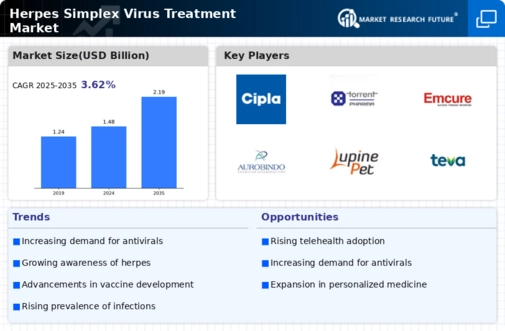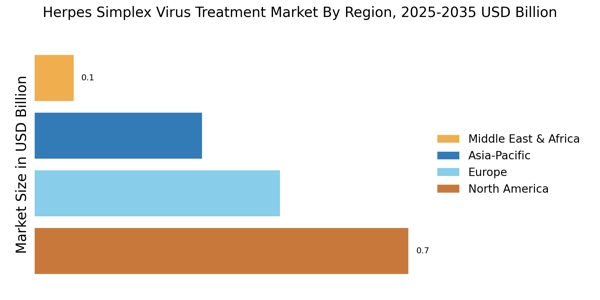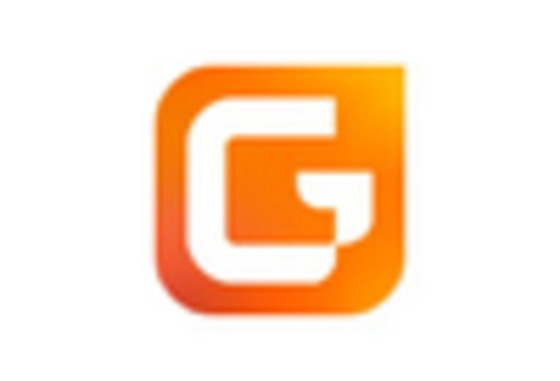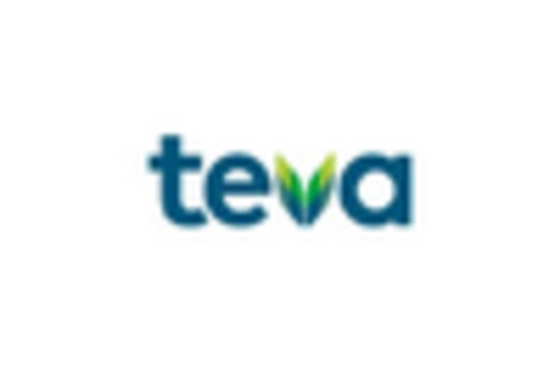Rising Adoption of Telehealth Services
The adoption of telehealth services is transforming the landscape of the Herpes Simplex Virus Treatment Market. With the convenience of remote consultations, patients are more likely to seek medical advice and treatment for herpes simplex virus infections. Telehealth platforms facilitate access to healthcare professionals, enabling timely diagnosis and prescription of antiviral medications. This trend is particularly beneficial for individuals who may feel stigmatized or uncomfortable discussing their condition in person. As telehealth continues to gain popularity, it is anticipated that the market for herpes simplex virus treatments will expand, as more patients utilize these services to manage their health effectively.
Increasing Focus on Preventive Healthcare
The growing emphasis on preventive healthcare is influencing the Herpes Simplex Virus Treatment Market. As healthcare systems worldwide shift towards preventive measures, there is a heightened focus on education, screening, and early intervention for herpes simplex virus infections. This proactive approach is likely to lead to increased demand for antiviral treatments, as individuals seek to manage their health more effectively. Additionally, the integration of preventive strategies into healthcare policies may encourage more individuals to engage in regular health check-ups, thereby facilitating early diagnosis and treatment. Consequently, the market is expected to benefit from this trend as preventive healthcare becomes a priority for both patients and healthcare providers.
Advancements in Antiviral Drug Development
Innovations in antiviral drug development are significantly influencing the Herpes Simplex Virus Treatment Market. Recent advancements have led to the introduction of novel antiviral agents that exhibit enhanced efficacy and reduced side effects. For instance, the development of new formulations and delivery methods, such as topical treatments and long-acting injectables, is expected to improve patient compliance and treatment outcomes. The market is projected to witness a compound annual growth rate (CAGR) of approximately 5% over the next few years, driven by these advancements. Additionally, ongoing research into combination therapies may provide more effective treatment regimens, further stimulating market growth as healthcare providers seek to optimize patient care.
Growing Awareness and Education Initiatives
The increasing awareness and education initiatives surrounding herpes simplex virus infections are pivotal for the Herpes Simplex Virus Treatment Market. Public health campaigns aimed at educating individuals about the symptoms, transmission, and treatment options for herpes are gaining traction. This heightened awareness is likely to encourage more individuals to seek diagnosis and treatment, thereby expanding the market. Furthermore, healthcare providers are increasingly emphasizing the importance of early intervention and management of herpes infections, which could lead to a rise in the utilization of antiviral therapies. As a result, the market is expected to experience growth as more patients become informed about their treatment options.
Increasing Prevalence of Herpes Simplex Virus
The rising incidence of herpes simplex virus infections is a primary driver for the Herpes Simplex Virus Treatment Market. According to estimates, a substantial portion of the population is affected by HSV-1 and HSV-2, with millions of new cases reported annually. This increasing prevalence necessitates effective treatment options, thereby propelling market growth. The demand for antiviral medications, particularly acyclovir and valacyclovir, is expected to rise as more individuals seek medical intervention. Furthermore, the growing awareness regarding the implications of herpes infections on overall health and quality of life is likely to drive patients towards seeking treatment, thus expanding the market for herpes simplex virus therapies.


















Leave a Comment